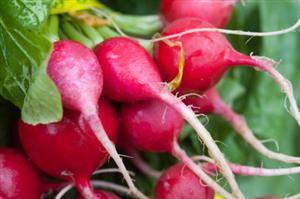
Plant Growth and Water
Easy

We're going to find out how much water plants need to grow healthy and strong. We'll measure the height of the plants after 10 days of watering with different amounts of water.
Hypothesis
The hypothesis is that plants require sufficient water for a healthy growth rate, but over-watering plants will result in slower growth.
Method & Materials
You will fill 10 pots with the same amount of soil, place 3 radish seeds in each pot, label the pots with the amount of water to be given to the plants every day, and measure the height of the plants on the 10th day.
You will need radish seeds, small plastic pots, soil, tap water, a measuring cylinder, a ruler, and a marker.
Results
The experiment showed that the optimum amount of water required for optimum radish plant growth was between 30 ml to 50 ml. When the radish plants were watered with more than 60ml of water, slower plant growth was observed.
Why do this project?
This science project is interesting because it shows how much water plants need to grow healthy and strong.
Also Consider
Variations of this experiment could include using different types of plants such as mung beans or chinese bamboo, or placing the plants in different environments such as under the sun, in a shaded area or indoors.
Full project details
You can find additional information and details for this science fair project here. Have fun exploring!Related videos
Hey there! Here are some awesome videos about this science project that we think you'll really like. They're not only super fun, but they'll also help you learn more about the science behind the project. So sit back, relax, and get ready to have some fun!!
Share this Science Project:
Related Science Fair Project Ideas
Can you make a bubble that won't burst? Find out with this fun science project!
Easy
Have you ever wanted to make your RC car go faster? In this science project, you will find out how to make your RC car go faster by changing the ...
Easy
Does playing video games make your blood pressure go up? Find out in this fun experiment!
Easy
Share this Science Project:
